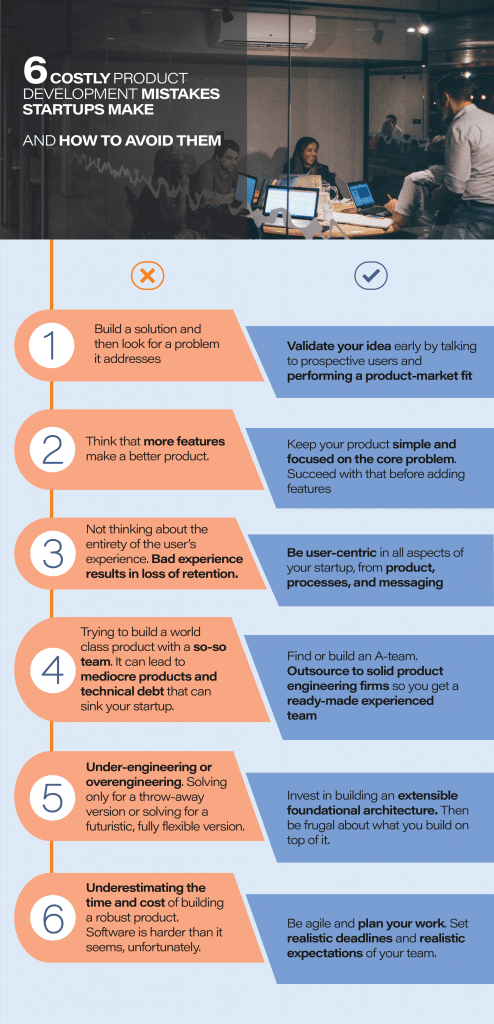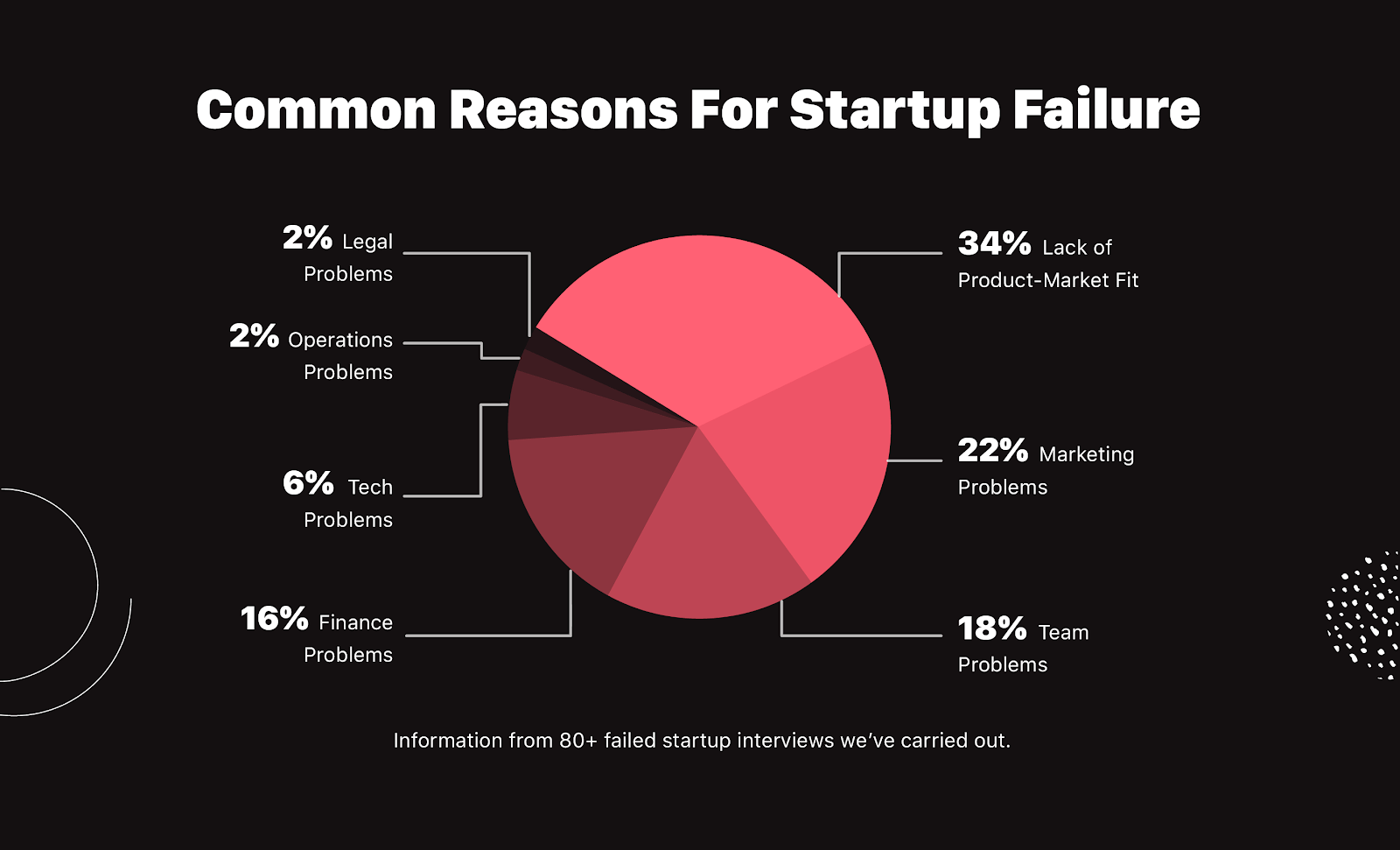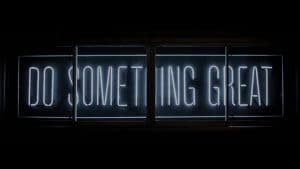Successful businesses, especially startups, are often a result of successful decision-making. Thus, before we dive into comprehending these startup tips, it’s important to understand the factors that contribute to your startups’ success.
Business decision-making is not as simple as ‘Let’s just take this path and see where it goes.’ It is a process of solving problems by weighing evidence, examining alternatives, and choosing a path from there. Thus, you could say that the likelihood of your startup succeeding or failing is proportional to the number of smart decisions you make throughout the process.
But, what do you mean by smart decision making? I would define smart decision making as a process of not only choosing the right path but also knowing when and how to avoid costly mistakes, especially in the early-stage. In our experience, we have seen a recurring trend of decisions and actions in startups that lead to self-imposed limits for business development. Few of these startups even reached a higher level on the startup ladder, yet they failed.
What was the reason? Let’s find out.
If you lead an early-stage startup, you may fall into some pits. But knowing some obvious mistakes will help you avoid them.
Why is it important to avoid these mistakes?
Yes, you do learn from your mistakes, but you should not be tolerating costly errors. Identifying issues early on and knowing the difficulties ahead of time helps you minimize costs and penalties when things may not go as expected. It is easier said than done.
Ideas are easy, implementation is hard.
Thus, we have carefully curated these product development tips for you.
1. Solution Looking for a Problem
According to CB Insights, 42% of all startups fail due to the lack of market need. There are many solvable problems around. But you don’t just want to solve any problem as a startup; you want to solve the best problem.
A problem perceived by the minds engaged in a startup might not be a problem for a more extensive base of people. If you cannot scale your idea, well, your growth is already restricted. An excellent example of this is Google Glass. Google tried to be ahead of its time and expected a larger group of people would prefer a “hand-free” smartphone. Although the idea was astounding, the market was not ready for it, and the result? Failure.
In an interview conducted by Failory, with more than 80 startups, 34% spoke about the effects of lack of product fitness. Of the 80 ventures, 34% produced something that nobody wanted later on. The most popular lesson listed by far is that you have to check if the market really wants what you offer.
Tips for starting up:
Market research. You may have to have to ask a few fundamental questions. You can start by defining the problem. One needs to stop worrying about the idea getting stolen and instead get it validated early. Talk to potential customers. A quick survey in your network proves to be efficacious as it will help you gauge customer interest.
2. Bloating with Features
A person is usually biased towards his own idea, this causes an increase in the number of niche features when the concept expands. It is like building a Swiss Army Knife with only one or two tools that users might really find useful.
This results in needless software sophistication that increases the time, effort, and money needed for the product and renders it less viable to change directions at a later stage.
Tips for starting up:
You need to do something simple. KISS. Confused? This isn’t the kiss that you’re thinking about. KISS simply means ‘Keep It Simple Stupid’. All you need to do is be on track with the value you are trying to impart and try to keep it simple for users. As the complexity increases for the users, the retention rate drops.
Here are a few mitigation strategies:
- Prioritize the user stories. Create a detailed list of user stories and categorize them.
- Create an outline of key experiments that would allow you to validate or invalidate your hypothesis. This will help you determine what the market needs and what it cares about.
- Build an MVP. This is one crucial thing you should do. Find out the minimum set of attributes to prove or refute the hypothesis. take a close look at what you can do with minimal to zero coding.
- Observe and collect data by taking the MVP to the market and figure out if your potential users are actually using it. Analytics comes into the picture here. Track the usage of your users and analyze what they’re using and how often.
- Build more on the MVP or change directions. These additional experiments will help you validate your hypothesis better. Iterate Often
NOTE: Don’t worry about failures. The purpose is to minimize the cost of failures, not the rate of failure.
3. Not putting the UX in the front-and-centre
Holding on to the previous point, user retention. If the user does not enjoy using it or finds it complicated to learn, they will not use your product for long. Most startups struggle during the development process because they target the development and coding phases, while not considering the design and the user’s experience.
According to CB Insights, 17% of the startups failed because their product was not user-friendly.
You must know and understand these two essential aspects of design as the non-technical founder of a company: User Experience (UX) and User Interface (UI).
UX is beyond the UI; it covers everything that touches the user and allows the user to make forward progress, whether in transactions, or status updates, or information needs. UI contains all elements allowing a user to interact with a product’s software.
Tips for starting up:
- Ensure that there is a strong UX designer on your team.
- Review your product from a user-centric perspective
- Sensitize the technology team that UX needs to drive the experience decisions.
- Do not assign design tasks to technical teams (UI or process), as they might solve it from an engineering point-of-view rather than a user-centric point-of-view.
4. Not having an A-Team
It isn’t easy to find high-caliber talent. It is costly to employ high-caliber talent. False hires can lead to disasters in your team and it can take a lot of time and cost to reverse these bad decisions. Getting a team working for you is usually a time-consuming process and takes a few months, and A-teams can take over a year to solidify in some cases. You can utilize this time to improve your product.
Beepi was a prime example of poor management and leadership. Experts say they tried to go big too fast. Bad management caused Beepi to run out of cash flow which became the reason for their failure.
Tips for starting up:
In the early stage of your startup, you need some leadership and some experience. Here are some ways to achieve that:
- Establish a product leadership – find a CTO (or a part-time virtual CTO), UX leadership, and product manager who can establish the leadership.
- Engage Experts: A great way to reduce efforts and save time is to find a product-focused outsourcing company that can engage with teams that know early-stage product development and have people who have been doing that.
- Build capabilities: Slowly start building internal capabilities or continue with the outsourced partners.
5. Short-sighted or overly grandiose technology decisions
Let’s talk tech.
After all the fundamental research, getting your hypothesis validated, having an A-team ready, it is now time to take the leap into technology and get the product development started. Here’s another hurdle in your product’s lifecycle. Deciding the tech-stack and architecture. This can leave you with a massive barrier to growth and success if not done right. Now, there must be a perfect balance while doing this. Think too short term and your product will be left with a lot of technical debt. Think too grand and you will incur engineering costs that may not be necessary.
Tips for starting up:
- Choose a technology stack that meets the product’s long-term needs. Read more about our preferred tech stacks here.
- Create an Extensible Foundational Architecture: Determine a fundamental architecture that will allow additional features to be introduced in the future without incurring cost in the present.
- Ensure you have considered security, privacy, scaling needs, performance, and extensibility for immediate as well as future developments.
- Optimize for immediate needs at the higher layers. While the tech stack is being decided, you can build pieces of the UI that are solving the MVP problem.
6. Underestimating the time and complexity
“Everyone has a plan until they get punched in the face,” says Mike Tyson.
In the excitement of a new startup or a product, we tend to overlook how important laying out a roadmap is. Building software is a challenging and time-consuming process. It would be best to make sure that quality work is being done without misspending. There is no free or easy lunch. It’s a trap to think that products can be built overnight. Most startups fail because they do not have a roadmap prepared.
Tips for starting up:
- Estimate your time accurately for your first launch.
- Use Agile Methodology: Set a timeframe and try and get as much done as possible. Then launch and learn. Iterate your product with what you’ve learned.
- Contain your desire to make changes mid-stream. This is a common cause for overruns.

Key takeaway
These startup tips answer the widely asked question, “What are the top mistakes that kill a startup?” To summarize, start with market research. Contain the tempt to bloat your product with features and make sure the product has a good user experience. Have a good managerial team and be reasonable with technology. Finally, plan out your product development journey beforehand.
The examples above demonstrate very clearly that you can struggle even though you find investors and obtain all the funds you need. Although the failure of these startups does not undermine the chances of other startups succeeding. It’s all about playing the game cleverly.
Startups face an overwhelming number of challenges and there is no magic recipe for success. However, by avoiding these obvious mistakes, you can increase your chances. Every failure has a lesson to teach, and it is better to learn from their mistakes instead of your own.









